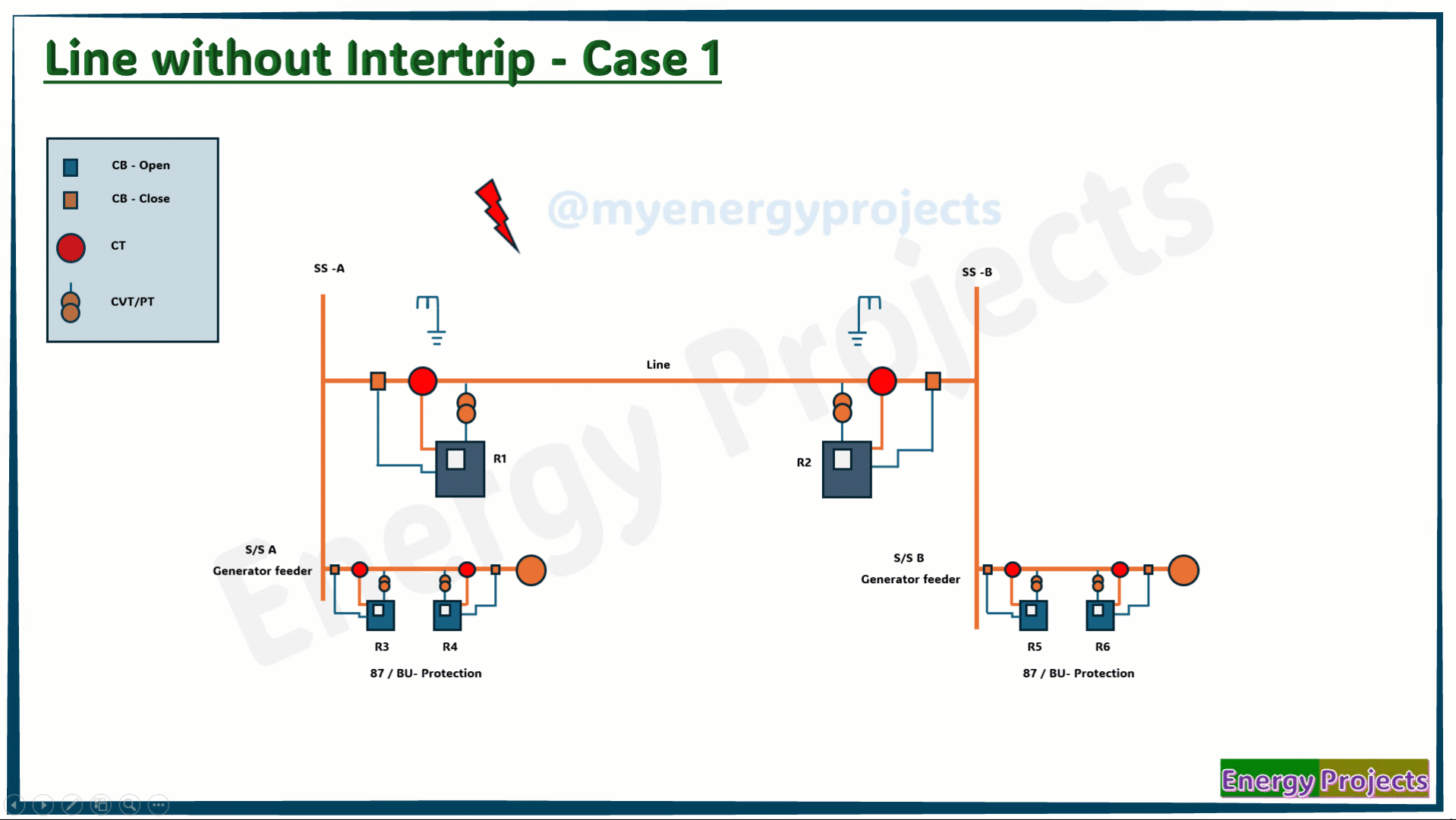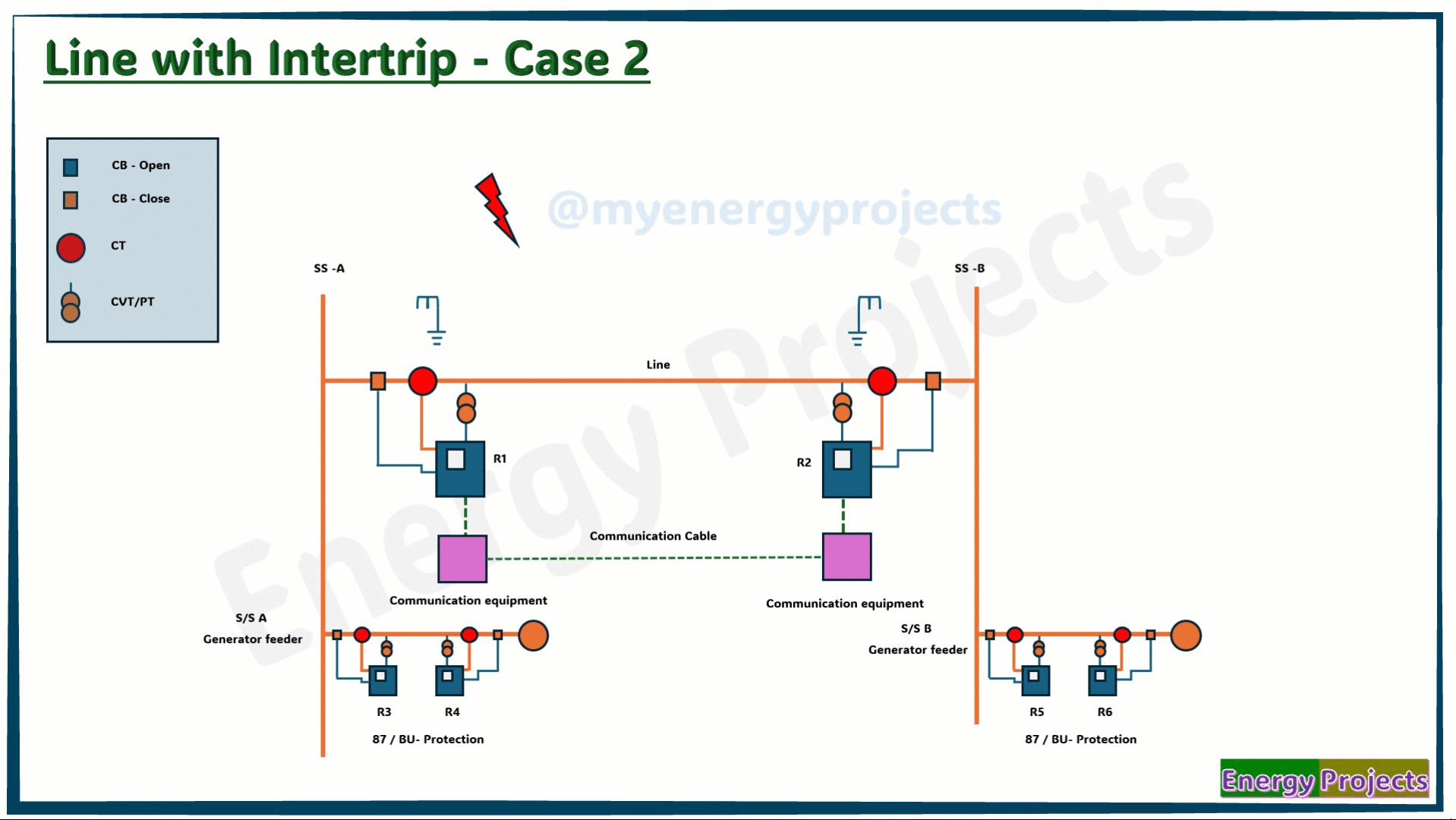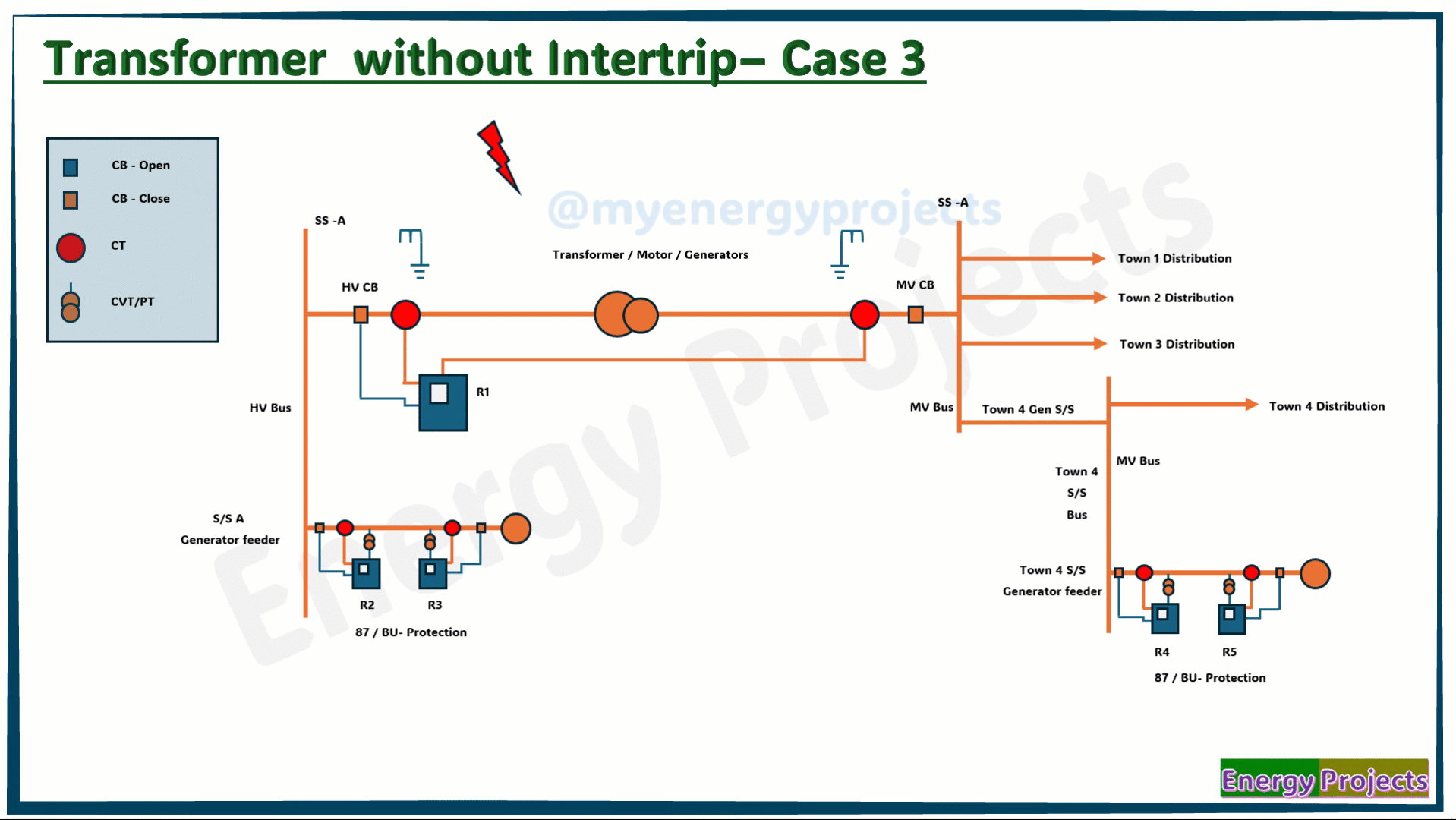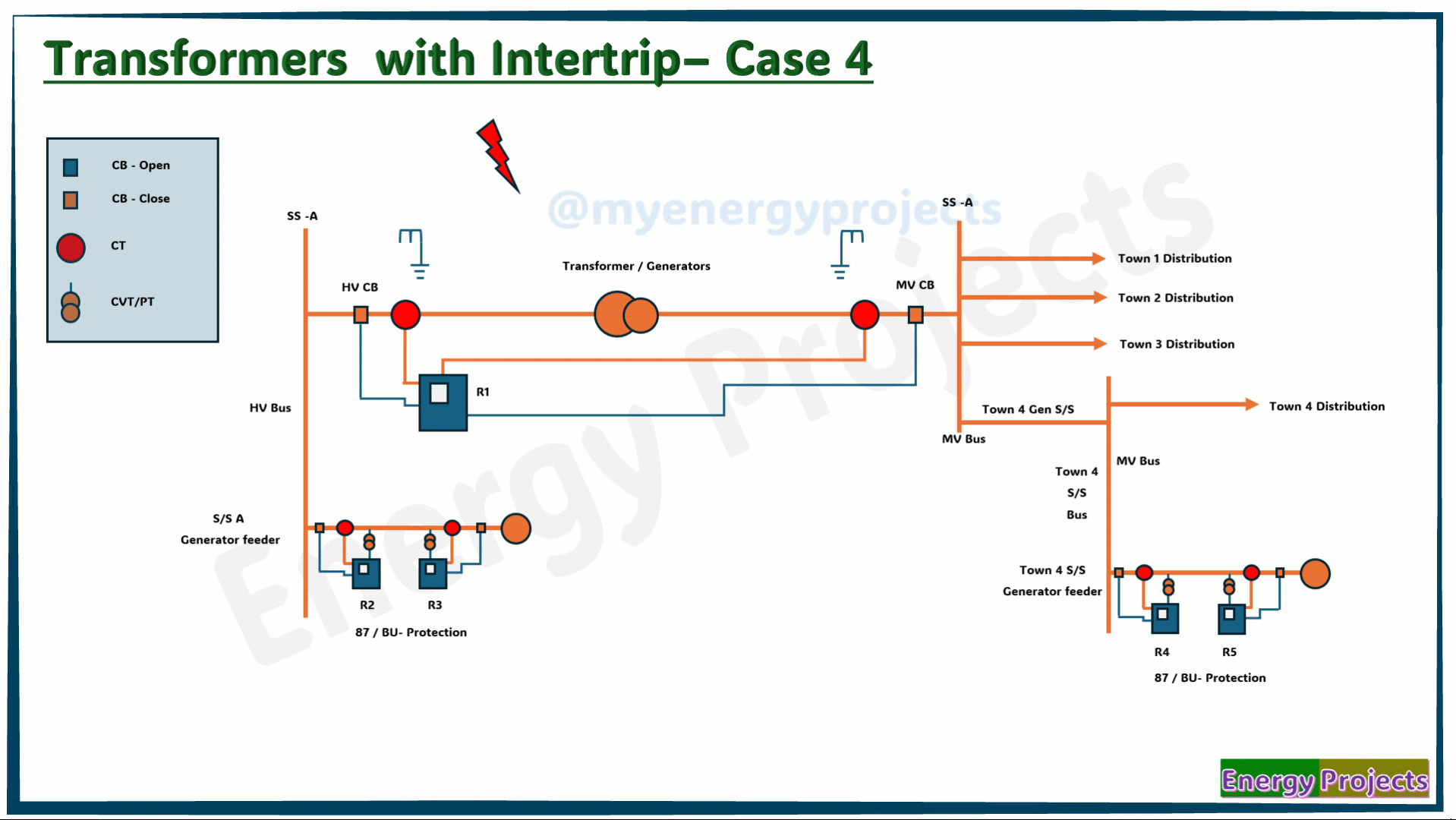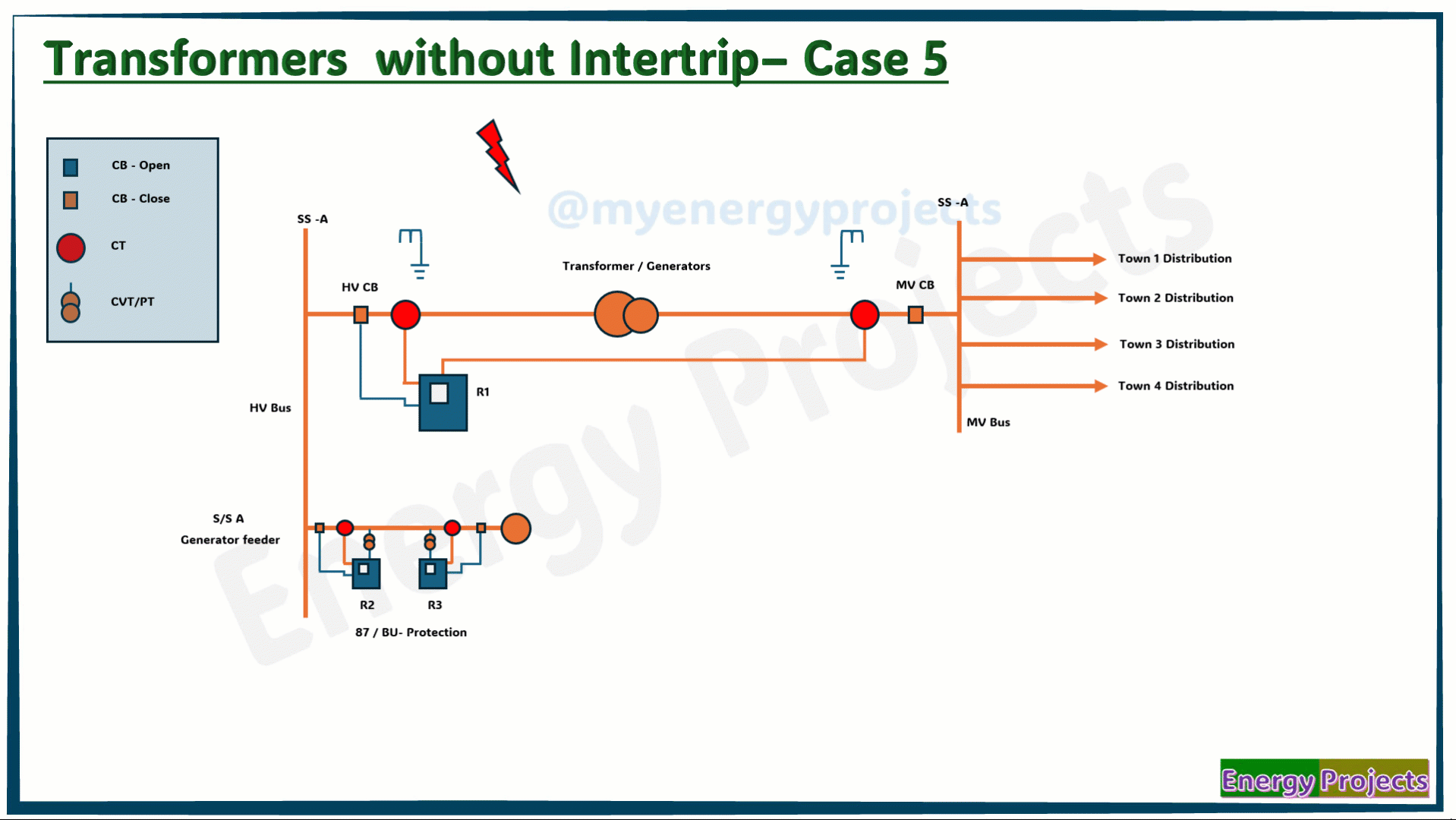Case Studies: Understanding Intertripping in Fault Scenarios
Case1: Line / Cable without Intertrip
When a fault occurs on the line, Relay R1 trips the breaker at Substation A. However, Substation B continues feeding the fault for a brief moment until Relay R2 operates after a delay. This delay can cause further damage to conductors or substation equipment.
Case2: Line / Cable with Intertrip
When a fault occurs on the line, Relay R1 trips the breaker at Substation A and simultaneously sends an intertrip signal to Substation B, ensuring both breakers open almost at the same time. This simultaneous tripping provides better protection for the line conductors and substation equipment, minimizing the risk of damage.
Case 3: Transformer Without Intertrip
A fault occurs within the transformer protection zone, which is defined by two Current Transformers (CTs) located between the HV (High Voltage) and MV (Medium Voltage) buses. Since both the HV and MV feeders are connected to generator sources, fault current can flow from both directions. If the HV and MV breakers are not tripped simultaneously, the resulting delay may allow high fault currents to persist, potentially causing severe damage to the transformer equipment.
Case 4: Transformer With Intertrip
The only difference between Case 3 and Case 4 is the addition of a new connection from Relay R1 to the MV circuit breaker. This allows intertripping of both the HV and MV breakers simultaneously in the event of a fault. When a fault occurs, Relay R1 detects it and immediately sends trip commands to both the HV and MV circuit breakers, ensuring the fault is isolated instantly and minimizing the risk of damage to the transformer.
Case 5: Transformer No Intertrip Required
If the MV bus is not connected to a power source, and a fault occurs in the transformer zone, it's sufficient to trip only the HV breaker. Since there's no back-feed, intertripping is unnecessary here.In such setups, isolators may replace circuit breakers on the MV side to save costs and facilitate maintenance.
Advantages:
High speed fault isolation
Supports good protection coordination with other circuits
Highly stable for grid operation
Disadvantages
Need Communication equipment/LDCM to receive signals
Increases cost
